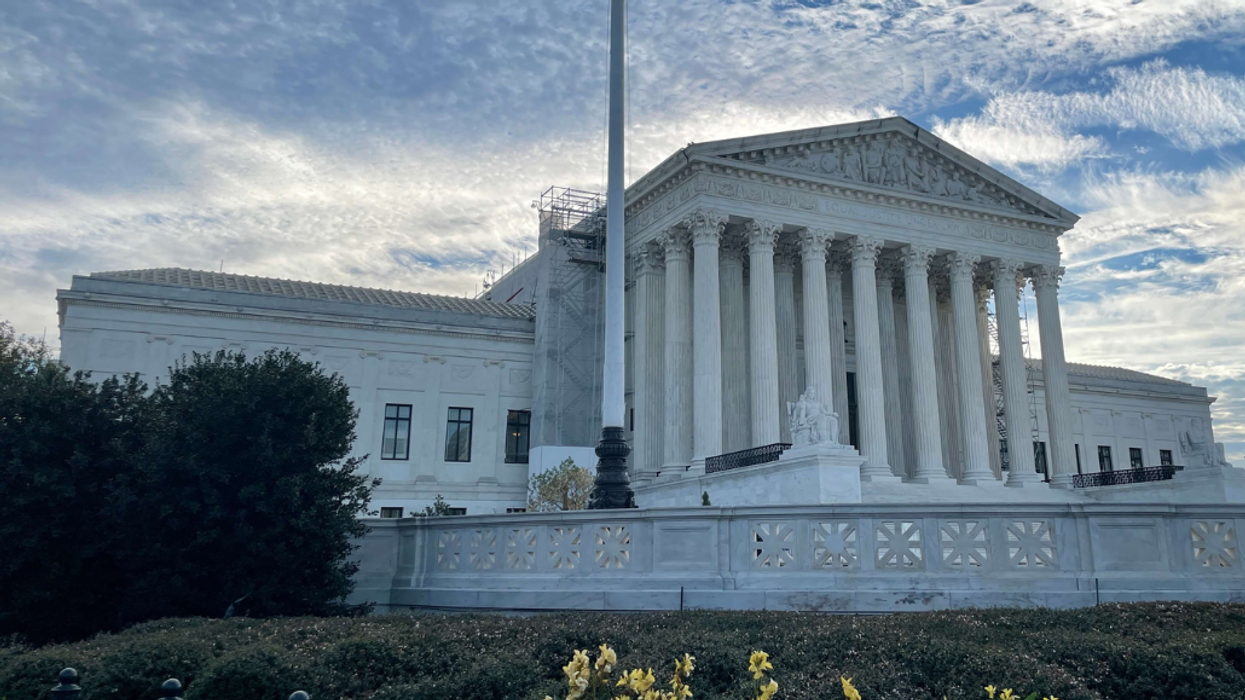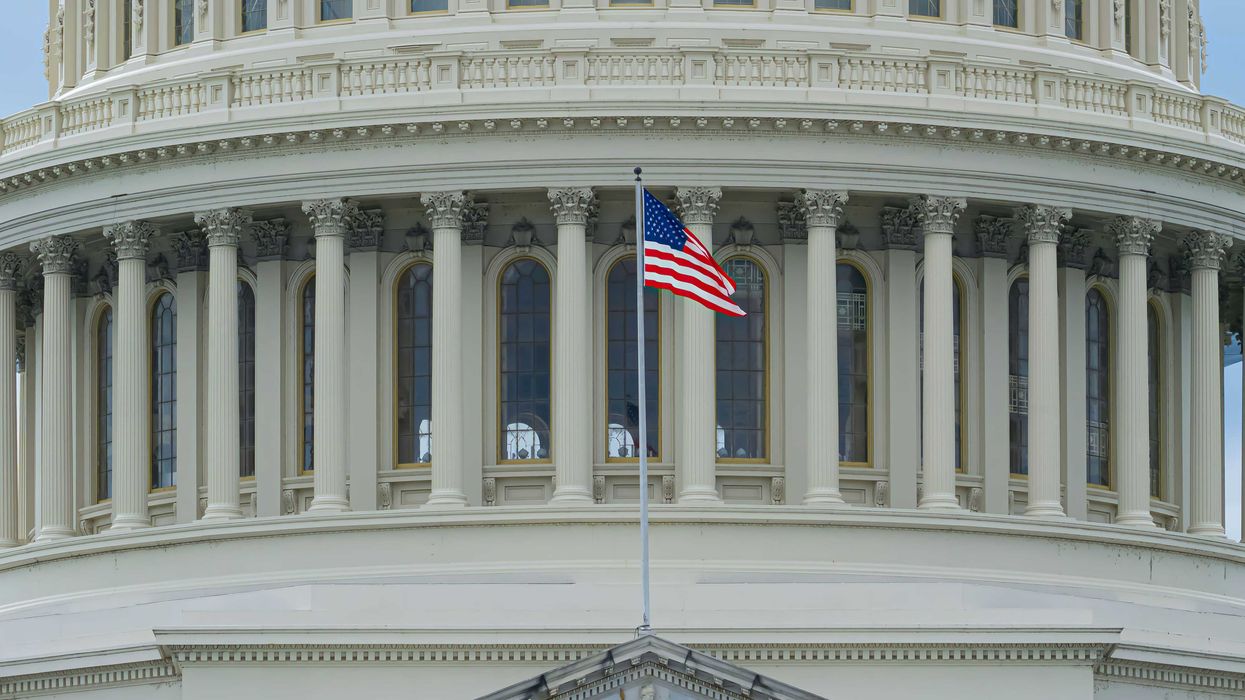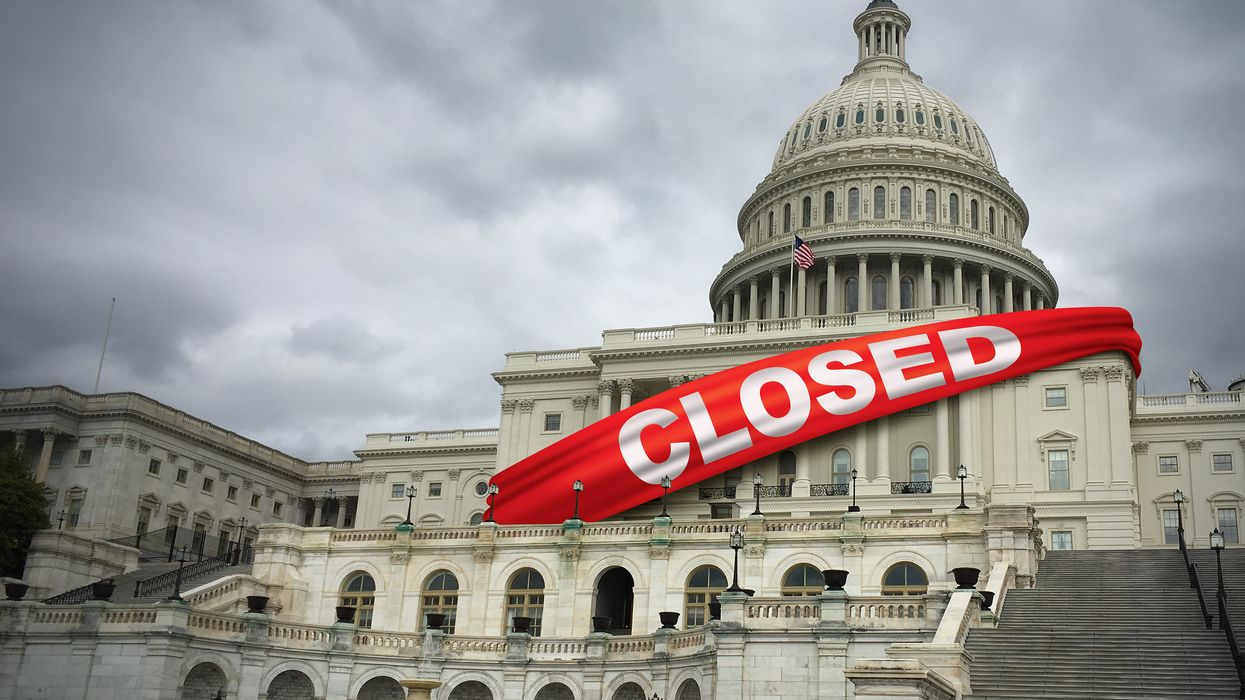Toscano is an attorney and a former Democratic leader in the Virginia House of Delegates. He is the author of “ Fighting Political Gridlock: How States Shape Our Nation and Our Lives.”
Montana and Kansas are typically viewed as politically conservative states. Donald Trump won both in 2016 and 2020 by hefty margins, and Democrats rarely prevail in presidential contests there. Bill Clinton was the last to win in Big Sky Country in 1992, and Lyndon Johnson was the last Democrat to take Kansas’ electoral votes in 1964.
While Democrats in both states can win statewide contests, their legislatures have been controlled by Republicans for decades, and now hold supermajorities in both chambers.
But there are cracks in these ruby red monoliths, if only because their state constitutions include provisions that make conservatives wince and provide progressives with opportunities to protect and expand rights in ways that the present Supreme Court would be unlikely to embrace. More importantly, Montana and Kansas are not alone; state constitutions across the nation include numerous, explicit rights not found in the U.S. Constitution.
As the Supreme Court and many federal courts appear increasingly hostile to constitutional challenges to conservative legislation passed by red legislatures, progressive legal advocates are looking for new options, and state courts have become one of them.
Climate, voting and reproductive rights
Montana and Kansas courts recently have shown new and creative ways to analyze issues in state-specific ways, reaching decisions that would rarely be issued by our highest court. For instance, this Supreme Court consistently rules against efforts to protect the environment or fight climate change. But only last year, a Montana district court decided in Held v. State that the state had violated its Constitution in failing to consider the impact of greenhouse gas emissions in its environmental reviews.
Supreme Court decisions, most notably its 2013 ruling in Shelby County v. Holder that gutted Section 5 of the Voting Rights Act, have undermined voting rights for decades and emboldened conservative state legislatures to pass countless bills that restrict the franchise. But this spring, the Montana Supreme Court in Democratic Party et. al. v. Jacobsen, struck down four measures enacted by the Legislature in 2021 that would have ended same-day voter registration, imposed restrictive voter ID requirements and curtailed absentee ballot access. The court ruled the laws violated “the fundamental right to vote provided to all citizens by the Montana Constitution.”
Finally, the present U.S. Supreme Court decimated federal reproductive rights by striking down Roe v. Wade in Dobbs v. Jackson Women’s Health Organization. But the Kansas Supreme Court, after holding in 2019 that reproductive rights were protected under the state Constitution, recently reaffirmed this view, issuing two 5-1 opinions in July striking down legislation that undermined those rights.
Redistricting
In these and other cases popping up around the country, state courts are embracing constitutional reasoning not recently seen in the federal courts. Redistricting is another example.
The 2019 Supreme Court decision Rucho v. Common Cause held that partisan gerrymanders could not be challenged in federal courts, thereby giving legislatures the green light to enact any plan they wanted. They acted with a vengeance, producing extremely partisan plans, especially in red states.
But buried in the Rucho case was language that opponents of hyperpartisanship took to heart. The court wrote that “[p]rovisions in state statutes and state constitutions can provide standards and guidance for state courts to apply.” And that was precisely what high courts in Alaska, Maryland, Ohio, New York and Wisconsin did, using their state constitutions to overturn hyperpartisan and racially discriminatory redistricting plans, and forcing legislatures to redraw their maps.
Just this month, the Utah Supreme Court argued that the Legislature’s efforts to undermine a 2018 voter-approved independent redistricting process would not likely pass constitutional muster.
Making different arguments
These cases are not only important in themselves, but for how the decisions were reached. The Held ruling is arguably the first time an American court has concluded that a law to promote fossil fuels violates a constitutional right, and provides encouragement for similar actions in places such as Massachusetts, New York and Pennsylvania, all of which include so-called “ green amendments ” in their state charters.
The Jacobson case is even more significant. Not only was it issued by Montana’s highest judicial panel, but the court’s analysis of voting rights under state law was dramatically more expansive than that used by today’s U.S. Supreme Court.
Finally, the recent Kansas decision on abortion found that the Legislature unconstitutionally restricted a fundamental right under the state Constitution “to personal autonomy, which includes a pregnant person’s right to terminate a pregnancy.”
State constitutions are different
Many Americans know little about these state court decisions, and focus instead on the glitz and drama associated with the U.S. Supreme Court. In the process, however, they neglect the vast majority of legal cases heard by state courts that involve some of our most important rights and liberties. Why are these courts potentially fertile ground for progressives?
First, state constitutions include a plethora of rights that are not found in our U.S. charter. The U.S. Constitution, for example, provides no explicit right to vote — but 49 state constitutions guarantee the franchise. The federal Constitution does not mention education and the U.S. Supreme Court held in 1973 that unequal educational funding is not a violation of our federal charter. Many state constitutions, however, include explicit language making education not only the state’s “paramount duty,”, but that it must be “fair,” “equal” and of “high quality.”
Our U.S. Constitution has yet to incorporate the Equal Rights Amendment, but 22 states now include gender equality provisions in theirs. Three state constitutions include explicit protections for the environment and several states will consider adding such provisions to their constitutions this fall. Eleven state constitutions include “rights of privacy” that are missing from the U.S. Constitution and provide an opportunity to challenge draconian anti-abortion statutes, even in the most conservative of states.
Second, while the U.S. Constitution often describes rights in the negative, e.g. “Congress shall make no law …” or “no state shall …,” state constitutions are designed both to protect citizens from governmental excesses and impose affirmative duties upon legislatures and the executive. The Pennsylvania Constitution, for example, states: “Elections shall be free and equal; and no power, civil or military, shall at any time interfere to prevent the free exercise of the right of suffrage.” This is not just a right of citizens, but the duty of government to protect it.
When created, the U.S. Constitution represented a patchwork of compromises born out of the differences between the various states at the time of our founding. The document is relatively short, and its clauses were designed to knit together diverse states to form a national government. Our Bill of Rights was added largely out of concern that, without it, ratification would fail. And most of those provisions were borrowed from the state constitutions that existed prior to ratification.
Numerous scholars suggest that state constitutions had a different focus than their federal counterpart adopted in 1789. They were written primarily to protect rights and support majoritarianism. There is no equivalence to the Electoral College in the state charters and no lifetime tenure for state judges. State constitutions are more easily amended; many even allow citizens to initiate changes through ballot initiatives rather than wait for their legislatures to act. Unlike the federal system, states require elections for numerous key positions, from attorneys general to secretaries of state to supreme court judges.
The power of citizens is the central focus of these charters.
Voting rights
The most significant examples of state courts going farther than the Supreme Court are found in the voting rights arena. And it is in this area where the impact of state courts may be most felt in this fall’s election.
Many Americans fail to realize that most laws and procedures involving the vote are determined by state governments. In decades past, those laws were rigorously scrutinized by our Supreme Court. But no longer! Over the last 50 years, the Supreme Court’s protection of voting rights has declined markedly. As conservatives gained control of the court, they began to water down the standards used to judge these cases, making the protection of the vote in federal courts increasingly problematic.
Voting rights cases at the federal level were previously reviewed under the standard known as “strict scrutiny.” This approach applied to challenges of laws or practices that either affected certain protected classes such as racial minorities or religious groups, or burdened a fundamental right such as the right of free expression.
In determining the constitutionality of these acts, the “strict scrutiny” standard of review requires the government to show that there is a "compelling governmental interest" in enacting the law or procedure, and that the measure is narrowly tailored to meet that goal. When this standard is used, it is tantamount to creating a presumption that the act is unconstitutional, a huge burden for government to overcome for the law or procedure to be constitutional.
That began to change, however, with two cases in the last century, Anderson v. Celebrezze in 1983, and Burdick v. Takushi in 1992. The Supreme Court now uses a standard for most voting rights cases called the Anderson-Burdick balancing test. Under this approach, only when a law “severely burdens” the right to vote will “strict scrutiny” be used. Instead, the court balances the degree of voter inconvenience against the stated governmental purpose. A legislature only need show a generalized need for a measure and that it does not overly burden the electorate, a much easier standard to meet.
Since the right to vote is not explicitly found in the U.S. Constitution, it became easier for the Supreme Court to avoid considering it a fundamental right for which strict scrutiny would apply. The result has been fewer successful federal constitutional challenges to changes in voting procedures.
The perils of lockstepping
Some state high courts simply followed the Supreme Court in applying Anderson-Burdick to their voting rights challenges, a practice that court watchers call “lockstepping.” When state courts lockstep, they adopt the perspective and precedents of federal courts rather than engage in an independent analysis of the state constitutional claim.
In 2024, for example, the Idaho Supreme Court rejected the use of a “strict scrutiny” standard of review as it ruled that prohibiting student IDs as voter identification did not violate the state Constitution. And the Kansas Supreme Court has held that laws on voting are not subject to strict scrutiny.
But other state courts have shown greater independence. This is what the Montana court did in Jacobsen, finding that “the Anderson-Burdick balancing test gives undue deference to state legislatures,” and that strict scrutiny should apply to laws that impinge on the fundamental right to vote.
Similarly, several other states have refused to lockstep the U.S. Supreme Court when considering hyperpartisan redistricting.
The Supreme Court has defined those plans as “political” and not subject to rigorous judicial review. Some states have not taken this view, preferring instead to look specifically at their constitutions for guidance. A recent analysis by Emily Lau at the University of Wisconsin argues that 27 states show a willingness to apply strict scrutiny to restrictive voting laws. When state courts lockstep, they fail to exercise their responsibility to check and balance the legislature — and issue more conservative decisions as a result.
Such approaches are increasingly being criticized by legal scholars across the political spectrum as a dereliction of duty to examine state constitutional provisions that protect and enhance our rights.
More than 70 percent of election litigation in 2022 occurred in state courts, and progressives have won their share of victories in their efforts to beat back hundreds of measures passed by Republican-controlled legislatures that would make voting more difficult. Much voting rights litigation is already occurring in anticipation of this fall’s election, especially in battleground states such as Pennsylvania, where almost 20 cases are on the docket.
Many of these cases have been brought by Republican state parties and their allies to sow dissent about the integrity of our elections. They involve issues ranging from whether the handbook for the local election officials is lawful (Arizona) to the permissibility of drop boxes (Wisconsin) to how long after Election Day mail-in ballots can be counted (Nevada, Pennsylvania). And we can expect more, especially if the election is close.
What’s Next? Constitutions and courts as contested terrain.
The full story of state constitutions and their role in defending democracy has yet to be written. Much will depend on the judges who are producing the opinions, and their degree of accountability. How those judges are selected will be key. Elections will play a major role; almost one-half of our states allow the public to directly choose state supreme court judges or vote in elections that allow them to retain a seat to which they were previously appointed.
Beyond judicial selection, citizens in 17 states have the ability to amend their constitution directly through ballot initiatives, and are increasingly doing so. Some 11 states, for example, have abortion rights initiatives on the ballot this fall.




















